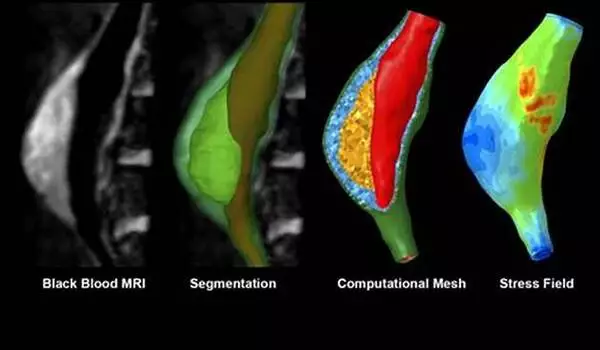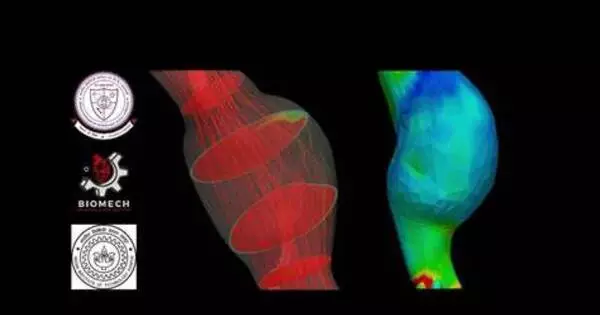Using computer modeling to detect, predict, and prevent aortic ruptures is a novel strategy that integrates medical research, engineering, and computational tools to enhance patient outcomes. Aortic ruptures are life-threatening incidents that must be detected and treated as soon as possible. Computational modeling can help achieve this goal by offering insights into the aorta’s biomechanics and forecasting potential rupture hazards.
According to some estimates, up to 80% of individuals who have a ruptured abdominal aortic aneurysm will die before or during surgery. However, early intervention can help to prevent rupture and improve outcomes. Researchers have developed a computational model of the cardiovascular system to predict early AAA rupture and track patients’ blood vessel health. They used image-based computational blood dynamics to simulate specific health states and study various hemodynamic parameters.
An abdominal aortic aneurysm (AAA) is a condition in which the wall of the aorta, the body’s main artery, weakens and bulges outward. If left untreated, it can continue to develop and finally rupture, resulting in potentially fatal bleeding.
If an abdominal aortic aneurysm (AAA) is detected early, treatment options such as surgical repair or endovascular stent grafting are available to prevent rupture. These treatments are effective at both reducing the risk of rupture and improving survival rates.
Dr. Kumar
According to some estimates, up to 80% of patients with a ruptured AAA will die before arriving at the hospital or during operation. However, early management can prevent rupture, improve outcomes, and save lives.
Researchers from the Indian Institute of Technology (BHU) Varanasi and the Indian Institute of Technology Kanpur published a computer model of the cardiovascular system in Physics of Fluids by AIP Publishing in order to forecast early AAA rupture and monitor patients’ blood vessel status. The researchers studied the hemodynamics of pulsatile Newtonian fluids in an aortofemoral artery under normal and pathological conditions using realistic, patient-specific AAA forms.
Predicting the risk of AAA rupture involves a combination of imaging studies, such as ultrasound, CT scans, and MRI, and hemodynamics, as well as clinical factors such as age, sex, smoking history, and family history of AAA.

“If an AAA is detected early, treatment options such as surgical repair or endovascular stent grafting are available to prevent rupture,” the researchers wrote. “These treatments are effective at both reducing the risk of rupture and improving survival rates.”
The researchers used image-based computational blood dynamics to simulate specific health states and study various hemodynamic factors. They created patient-specific geometric models of the human aortofemoral artery using 3D medical imaging data. They employed finite element-based simulations to solve the blood flow controlling equations under pulsing conditions generated by the heart’s beating.
The researchers discovered that the size of an aneurysm changes the distribution of blood flow velocity. Furthermore, during systolic deceleration, flow separation occurs, and the vortex begins to travel in the aneurysm sac. This, among other complex dynamics, may affect blood circulation in the lower extremities.
“In the future, such computational work will help in the development of digital twins of the cardiovascular system,” Kumar explained.
Digital twins are virtual patient representations that get real-time updates on a wide range of data characteristics, allowing doctors to better foresee disease and select the best course of therapy.





